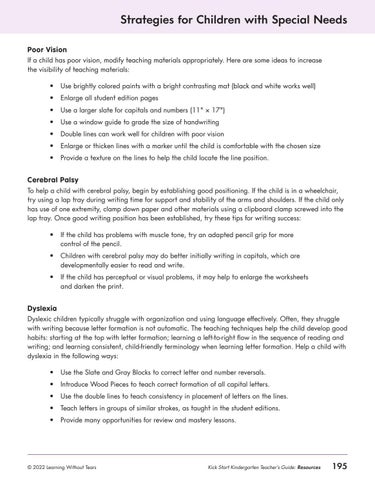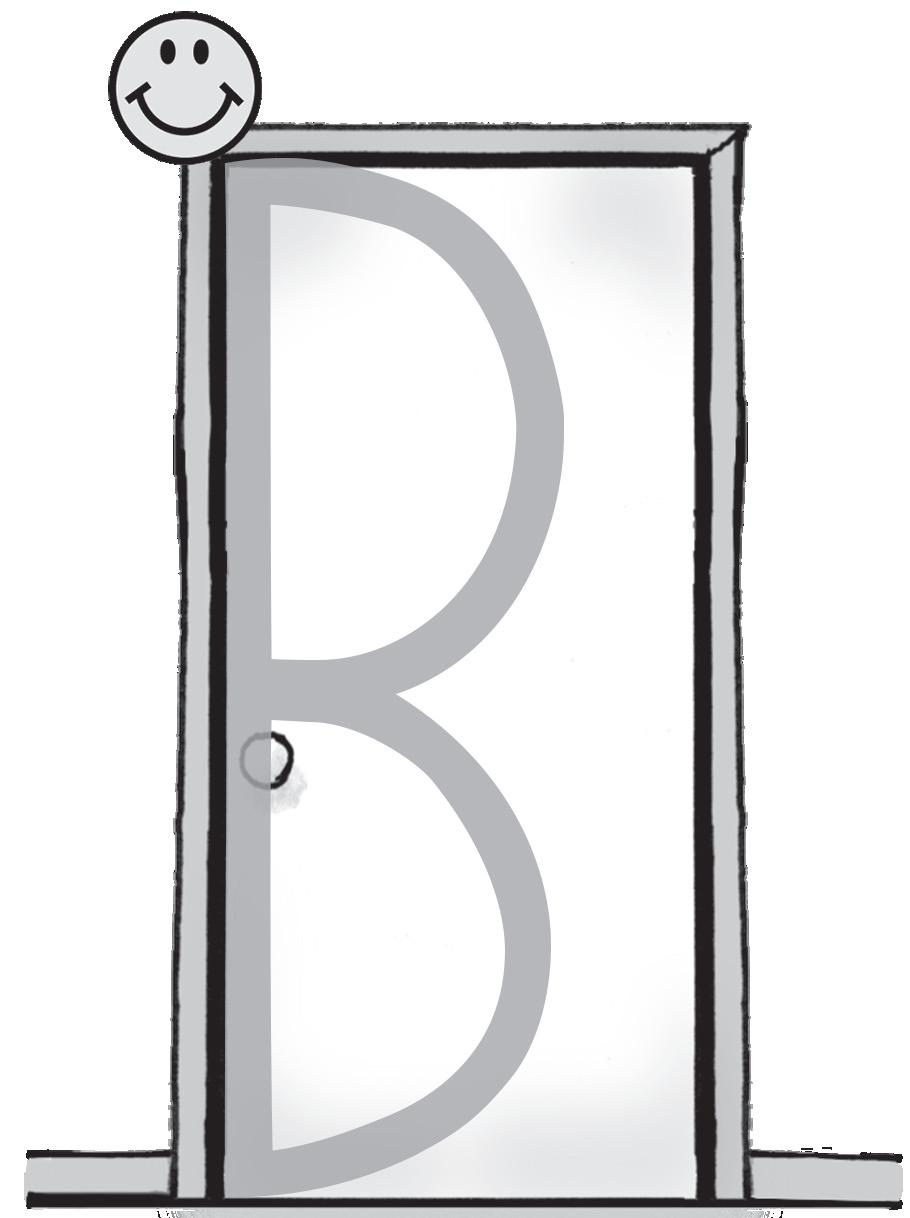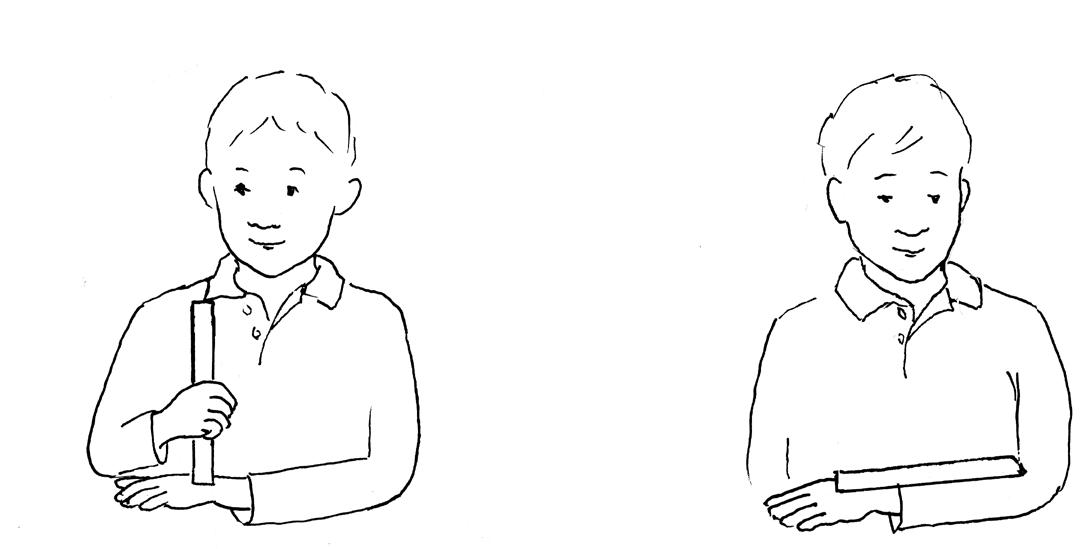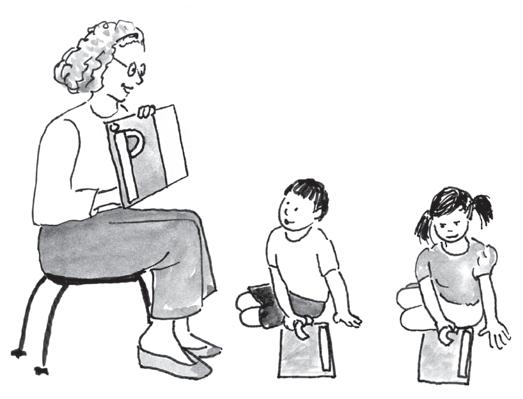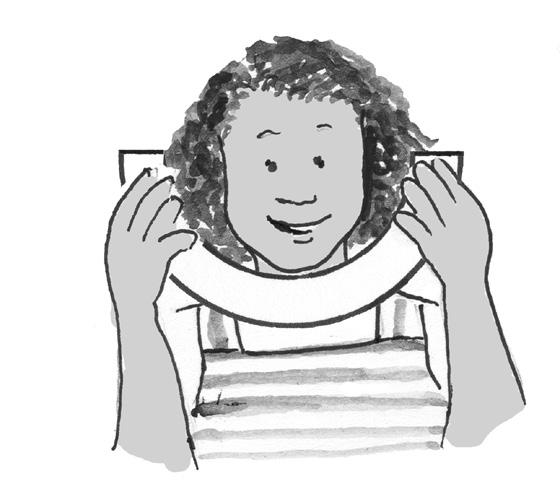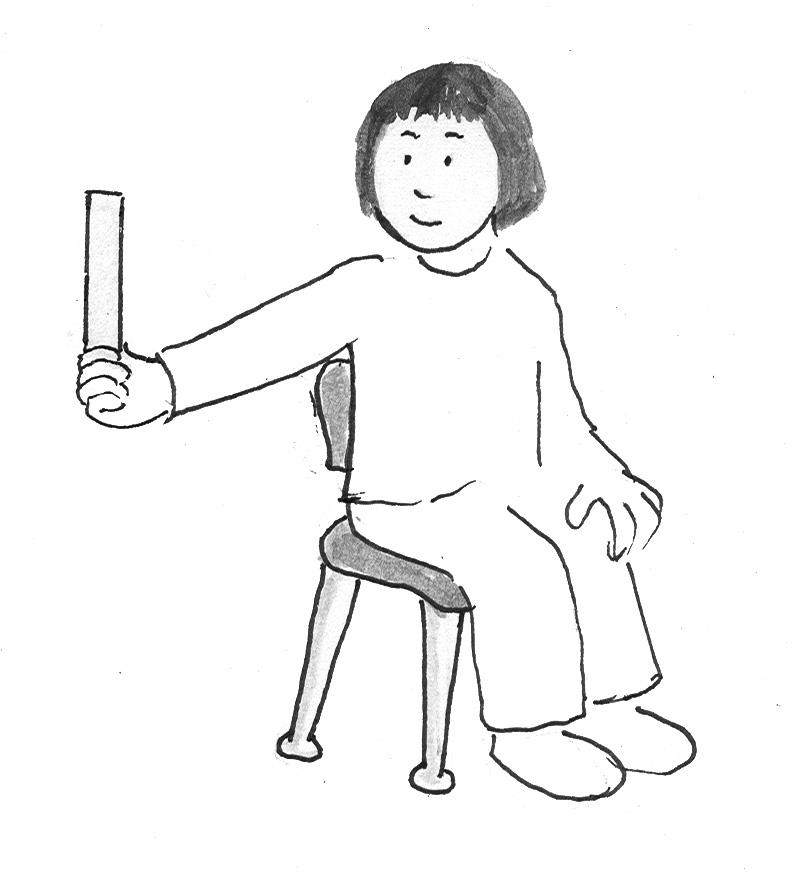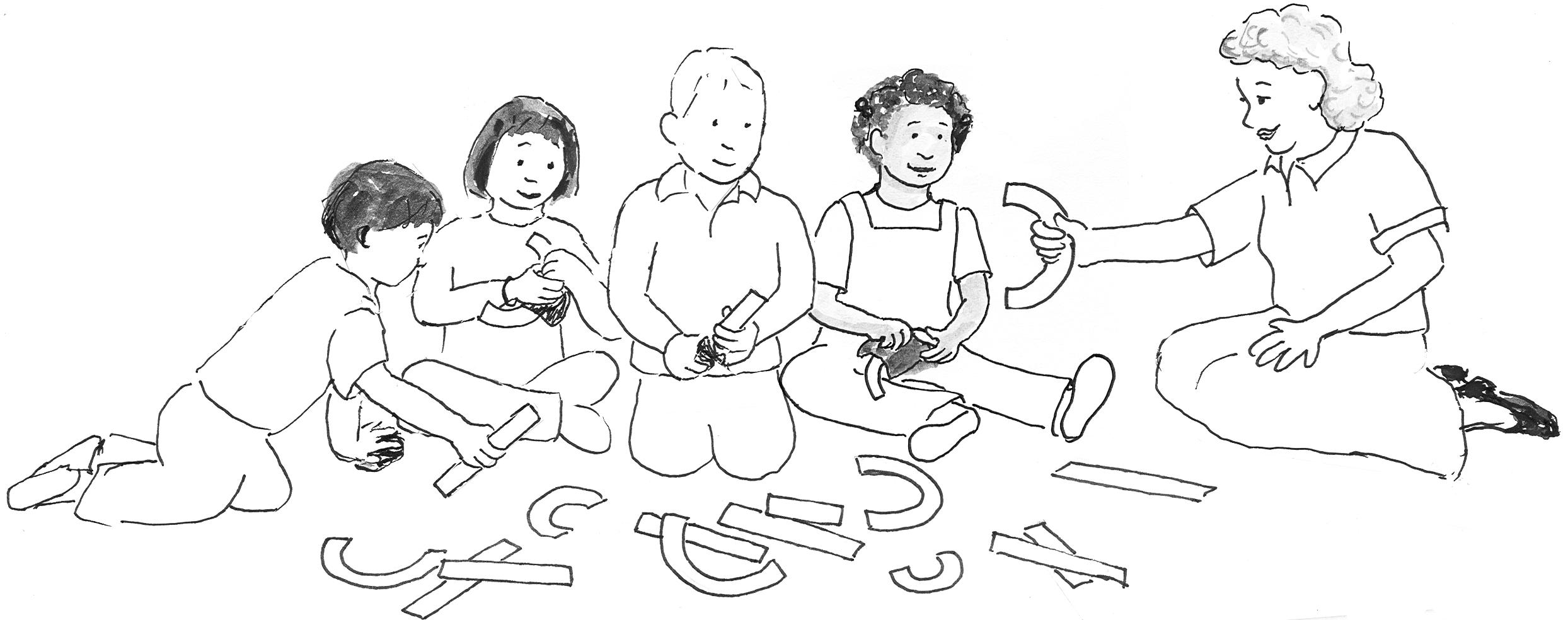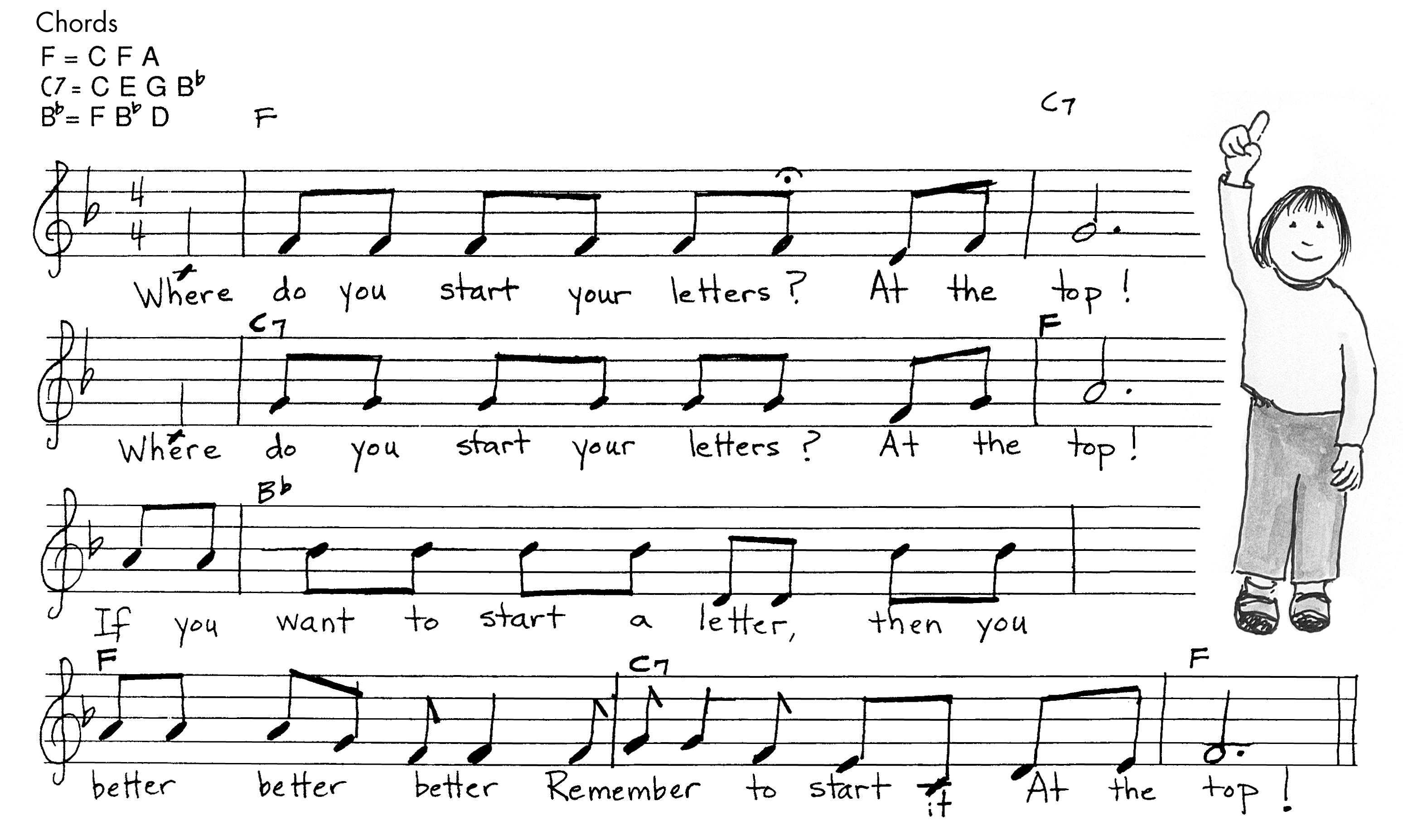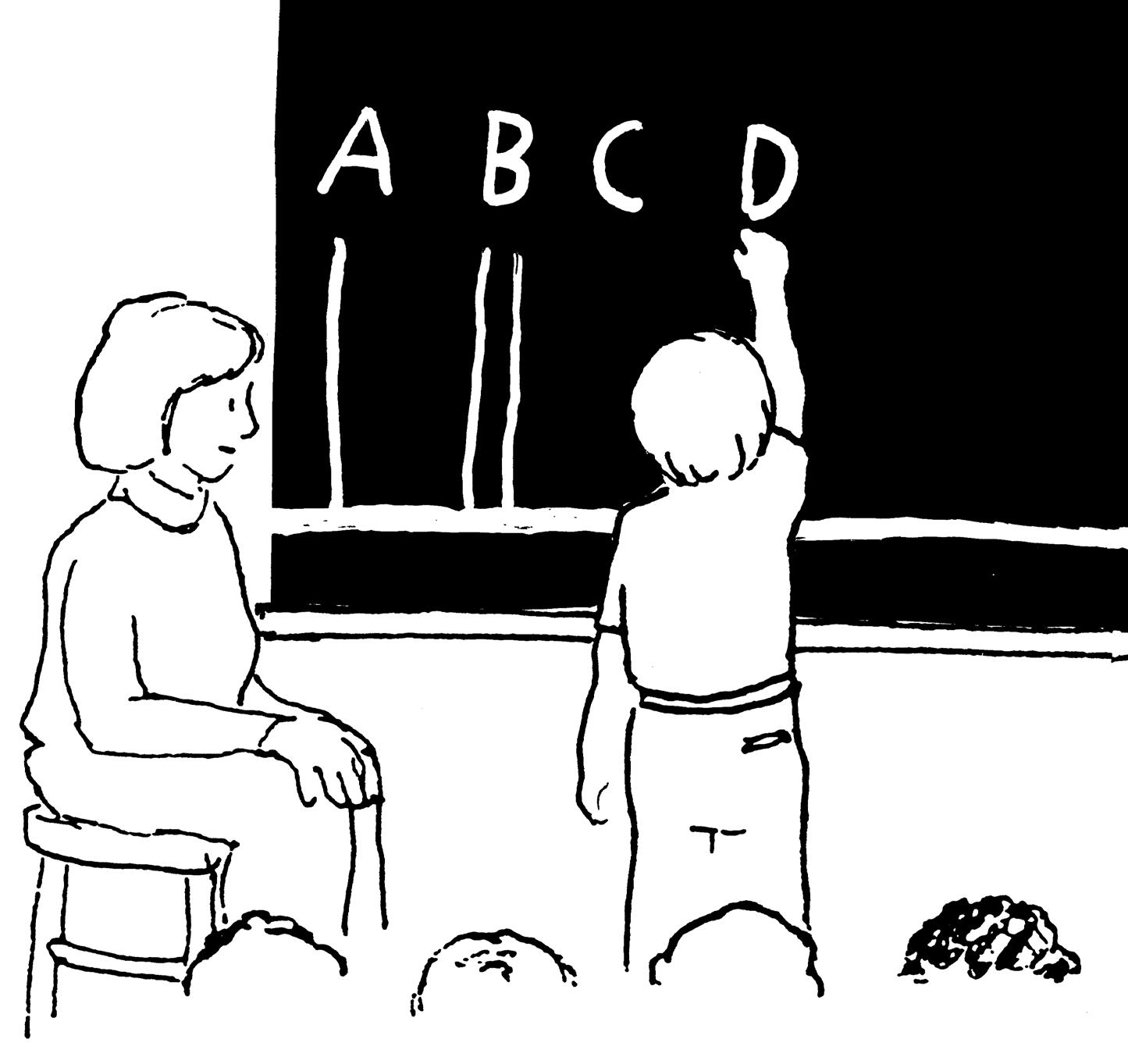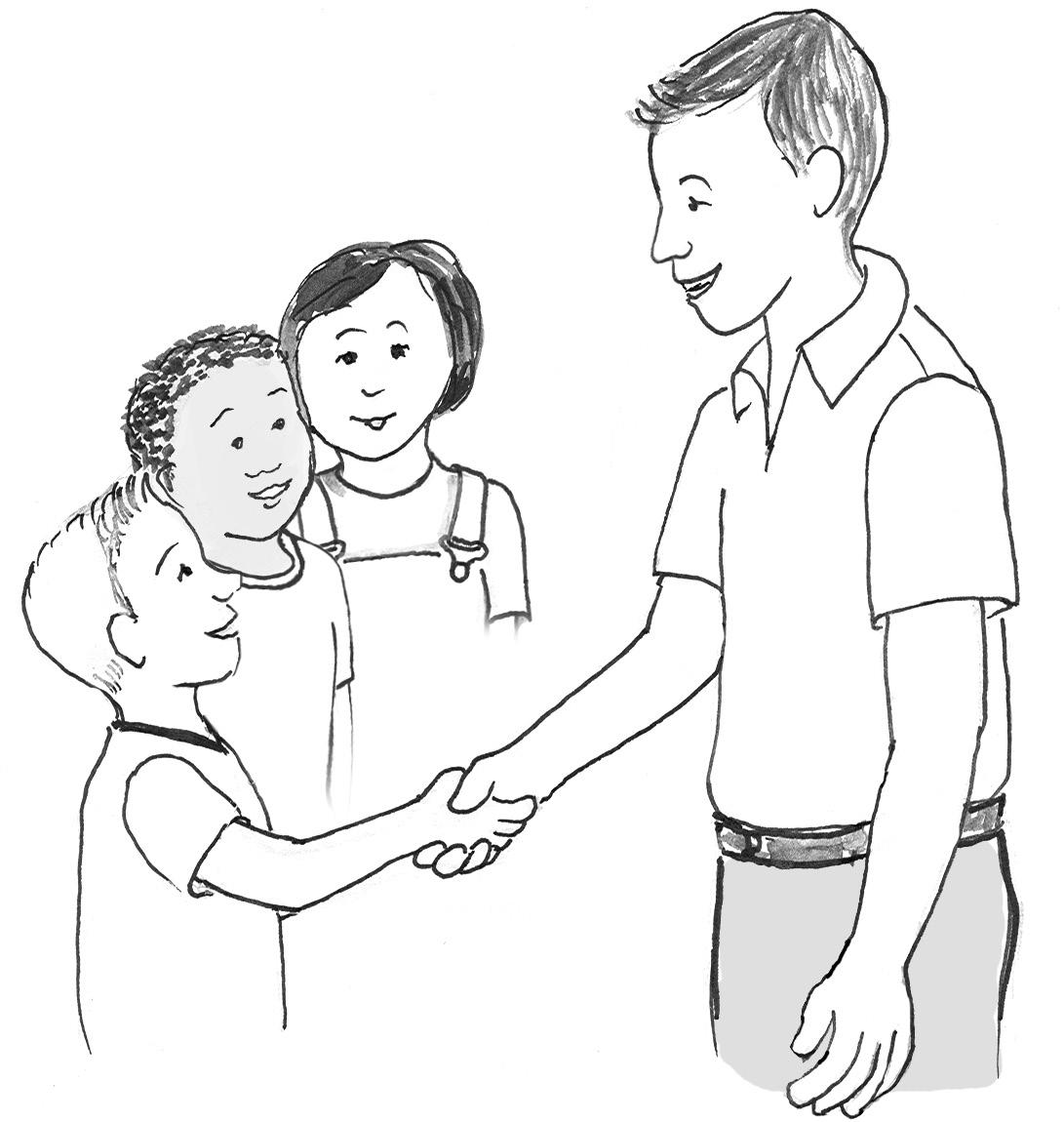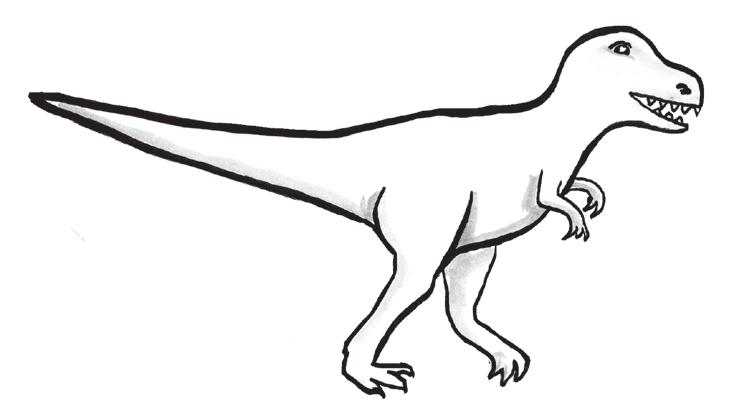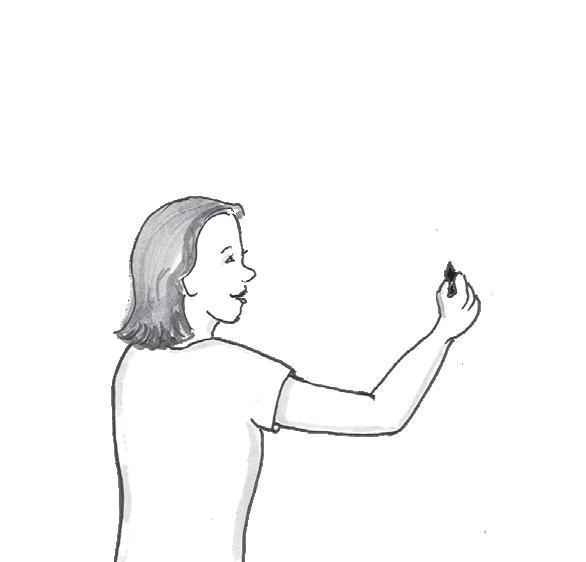Strategies for Children with Special Needs Poor Vision If a child has poor vision, modify teaching materials appropriately. Here are some ideas to increase the visibility of teaching materials: • Use brightly colored paints with a bright contrasting mat (black and white works well) • Enlarge all student edition pages • Use a larger slate for capitals and numbers (11" × 17") • Use a window guide to grade the size of handwriting • Double lines can work well for children with poor vision • Enlarge or thicken lines with a marker until the child is comfortable with the chosen size • Provide a texture on the lines to help the child locate the line position.
Cerebral Palsy To help a child with cerebral palsy, begin by establishing good positioning. If the child is in a wheelchair, try using a lap tray during writing time for support and stability of the arms and shoulders. If the child only has use of one extremity, clamp down paper and other materials using a clipboard clamp screwed into the lap tray. Once good writing position has been established, try these tips for writing success: • I f the child has problems with muscle tone, try an adapted pencil grip for more control of the pencil. • C hildren with cerebral palsy may do better initially writing in capitals, which are developmentally easier to read and write. • I f the child has perceptual or visual problems, it may help to enlarge the worksheets and darken the print.
Dyslexia Dyslexic children typically struggle with organization and using language effectively. Often, they struggle with writing because letter formation is not automatic. The teaching techniques help the child develop good habits: starting at the top with letter formation; learning a left-to-right flow in the sequence of reading and writing; and learning consistent, child-friendly terminology when learning letter formation. Help a child with dyslexia in the following ways: • Use the Slate and Gray Blocks to correct letter and number reversals. • Introduce Wood Pieces to teach correct formation of all capital letters. • Use the double lines to teach consistency in placement of letters on the lines. • Teach letters in groups of similar strokes, as taught in the student editions. • Provide many opportunities for review and mastery lessons.
© 2022 Learning Without Tears
Kick Start Kindergarten Teacher’s Guide: Resources
195
